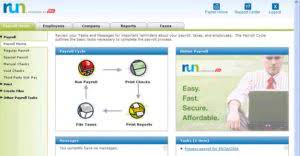
It will then be the GC’s responsibility to adhere to the prime contract on behalf of all hired subcontractors by submitting additional documentation alongside their payment application. Residential or renovation contractors often prepare a simple invoice with their company name, a description of the work completed, the amount payable and the payment terms. But on most commercial and public projects, contractors will invoice using a payment application. And one of the reasons behind this is the lack of awareness of the various construction billing methods. The advantage of this billing method is that the client has greater control over the project’s cost, and the contractor has the incentive to stay within the agreed-upon maximum price. Two benefits of this approach construction invoice are greater transparency and a lower chance of cost overruns.

Short (but reasonable) payment terms
Within statutory requirements, contractors can typically negotiate retainage terms. Once a payment application is approved, contractors generate an official invoice. This invoice reflects the agreed-upon amount after valuations, deductions, and retentions. Underbillings, where costs and earnings exceed billings, can cause cash flow problems and may indicate project delays or inefficiencies. Payroll reporting requirements for construction companies include union reports, workers’ compensation, newly hired employees reporting, and equal employment opportunity(EEO)minority.
- According to the National Construction Payment Report 2020, a survey of 540 construction professionals concluded that approximately 50% of construction contract professionals received payments on time.
- These jobs can be broken down into different stages, making it easier to track expenses and revenues per phase.
- Invest in specialized construction accounting software to streamline processes, automate payroll, improve accuracy, and save time.
- In the construction world, workers are often spread across different job sites, making it harder to track hours and ensure accurate pay.
- If you are struggling with your construction billing process, it is probably because you lack the support of the right technology.
Creating and Managing Invoices with QuickBooks
- Where a lien or bond claim isn’t available, pursuing legal action or taking to small claims court can always get the job done.
- Contractors can take a lien on the property to ensure payment, but prevention is always best.
- Construction billing can be complex and time-consuming, but the very health of a construction project depends on getting it right.
- This can often present a challenge as some of these regulations can be overlooked and cause issues later.
- BuildTech needs to ensure this overbilling is accurately reflected in their financial statements as a current liability to maintain financial transparency and manage cash flow effectively.
- The payment terms and other relevant requirements are defined based on the chosen billing method.
This process helps contractors understand the profitability of each project and make informed decisions about resource allocation and pricing. You can https://www.bookstime.com/ significantly enhance your construction billing process by selecting the appropriate software for construction billing methods. Seek out construction-specific software for customized functionality and features that align with your specific requirements. Construction billing is the process contractors, subcontractors, suppliers or any other entity engaged in a construction project follow to invoice for the services or materials they have supplied. The construction industry is complex, and construction billing must be accurate because contracts are complicated. Typically, invoices provide for 30 days of credit, though some larger companies even go as high as 120 days.
Contract revenue recognition
Retainer billing involves the client paying a set fee upfront to secure the contractor’s services. According to IAS 23, borrowing costs directly attributable to the acquisition or construction of a qualifying asset must be included in the asset’s cost. This aligns with the principle of matching costs with the benefits they generate. Companies must calculate these costs accurately, often using the weighted average interest rate on outstanding borrowings, to ensure compliance and optimize financial outcomes.
Time and Materials (T&M)
This balance will not only ensure financial health but also sustain long-term relationships with clients, which are the cornerstone of success in the construction industry. When overbilling occurs (and is accepted by the customer), it essentially means you’re invoicing for more work than has been completed at a given point. This approach allows you to collect cash in advance, effectively using the customer’s funds to finance the job. This strategy can provide a assets = liabilities + equity financial cushion, helping to fund materials, labor, or other project-related expenses upfront.
- Additionally, construction contracts frequently include retainage, which is a percentage of payment kept until the project is completed.
- This article will compare the most common construction billing methods, which projects best suit each — and suggest some billing best practices to help get contractors paid on time.
- It proves particularly advantageous for projects that involve uncertain amounts.
- This can cause issues if there are unanticipated expenses, as contractors can be left covering the costs themselves since the client has already paid.
Why Accurate Tracking of Expenses Matters
In construction accounting, job costing enhances the general ledger (G/L) by offering a project-level overview of all the finances. These factors add to the industry’s instability, demanding precise management of finances. Additionally, construction contracts frequently include retainage, which is a percentage of payment kept until the project is completed. This practice has a substantial impact on a contractor’s working capital and financial planning. Construction accounting is a slightly different type of accounting and financial management compared to other industries. It is developed to help contractors track each project and how it affects the business.
These standards also require evaluating subsequent costs, such as upgrades or major repairs, for potential capitalization. Accurate record-keeping and ongoing vigilance are essential to ensure the balance sheet reflects the true value of the assets. Construction differs from manufacturing in that it cannot build and store inventory in anticipation of demand; instead, production starts only once a contract is signed. This, combined with the frequent reliance on specialty of contractors, subcontractors create administrative difficulties and significant cash flow issues. Construction accounting differs from standard accounting due to the construction industry’s peculiarities.

Integrating QuickBooks with Other Contractor Tools

Explore effective strategies for managing assets under construction, focusing on accounting practices, cost capitalization, and tax considerations. With RedHammer as your partner, you gain access to a team of experts who understand the unique challenges of construction accounting. Let us help you implement strategies that drive efficiency, maintain financial integrity, and position your business for success. Each billing should undergo a review and approval process to ensure compliance with contract terms, mathematical accuracy, and the inclusion of necessary supporting documentation. This step helps avoid disputes and ensures that all billings align with the terms agreed upon in the contract. Overbilling and underbilling play significant roles in the financial dynamics of construction projects, often determining whether you or your customer ends up financing the work.